One year ago I rescued a one-eyed tiny frog, a spring peeper, from my pool. Since then I have gone to lengths to not only keep it alive, but also to try and make it happy, as if that is something that is doable, rational, or admirable.
I have long been into frogs, and when I moved into my new home surrounded by marshes, I was attracted by the intense noise of thousands of tiny spring peepers chirping, confused why something so loud was so hidden.
When I found the tiny frog in my pool, it was the first time I had seen one. Excited to study it, and worried about his ability to survive with only one eye, I built a small terrarium from an old mayonnaise jar. I placed the jar near my computer, on the desk in my study, and gave him the name of Pip. One I.
My first goal was keeping him alive. Since spring peepers live amongst low lying grasses and mosses of swamps, I collected a small bit of swamp — mud, water, plants — to turn the mayonnaise jar into a familiar eco system.
That also meant catching what spring peepers eat, tiny spiders and insects. I caught bugs around the porch lights, which evolved into raising fruit flies in a jar, which as Pip grew, evolved into catching crickets, which when the winter came, evolved into buying crickets at the pet stores.
It had all started as a scientific curiosity, a silly hobby to pass the time and to bond with my kids, and then it started becoming an obsession. It was absurd, but I started worrying about Pip.
I found myself glancing at the jar throughout the day. I watched to make sure he was eating. Despite a haphazard method of lunging at bugs only if they crossed into the path of his one eye, he started growing. He would became engorged after I released a batch of crickets into his jar, and I started worrying he was over-eating, with the vague notion that some animals don’t know when to stop when faced with over-abundance.
I was affected. When I couldn’t find Pip in the jar, a frustration would set in, and I would check the jar throughout the day, only relieved when I found him.
Once Pip was growing my worry started morphing into the more absurd question of Pip’s happiness.
Pip was becoming my inspiration (for lack of a better word) for a bunch of silly internal ethical arguments, mostly about animal rights, but also about happiness. Was Pip better off inside my jar? Are animals even happy? Why do we have pets? What should be the proper goal of a pet owner? Hell, are humans even happy?
I decided that the answer to one of those questions, Pip’s happiness, was to try and make his life as Froggy as possible — without the predators and the periodic starvation — the things that kill frogs. So maximize his frog existence.
When an early heat wave hit in February, thawing the marshes, it unleashed a swarm of once hibernating spring peepers. My long driveway was covered with frogs. I couldn’t drive without hitting a few, reminding me of the absurdity of putting so much effort into Pip. It also reminded me how I was keeping Pip from the social part of his frog-ness.
That night I collected four tiny spring peepers and added them to Pip’s jar. Immediately the jar resonated with the high-pitched barking of frogs, a miniature version of what was going on outside.The barking was dedicated towards sex. Pip was a she and being aggressively mated. Frog sex looks like fighting. The tiny male frogs would bark, then after Pip moved closer, jump onto Pip’s back putting her into a vice grip. For hours. According to biologist, this is called amplexus position.
When the female gets close, the male will climb on her back and grasp her with his front legs, a position called amplexus. The female will then travel — carrying her mate with her — to a pond or other body of water (if they aren’t already near one) to lay her eggs, which the male fertilizes as they’re being laid. The pair will normally stay in this coital position for one or two hours, if not all night.
The focus of the male was intense. Pip would be jumping around, hunting crickets, with one of the tiny males still attached to her back. The grip was intense enough, that I even got worried about her safety. Wondering if the skinny male frog wasn’t also trying to also kill her, I tried to remove him with a long pencil, only to have the tip snap from the strength of his grip.
To me, and I say this knowing the absurdity of what I am writing, it didn’t look fun. This was an integral part of what being a frog was? This is the frog-iness I was trying to maximize?
The next frog-iness issue was space. The mayonnaise jar was just too small. During the winter I had found a discarded 30-gallon aquarium, so I worked to turn it into Pip’s new home. I removed a three feet by one-foot section of the marsh and placed it into the aquarium. I collected more spring peepers from outside to test the new home, and after a few more days, put everyone in but Pip.
I was worried she would escape (and die in my house). Or I would lose track of her — a selfish worry that made me realize my desire to make Pip happy was really about me.
I eventually released Pip into her new home, and like the other frogs, she immediately burrowed into a clump of moss and twigs. I kind of was disappointed. I had partly expected that she wouldn’t hide, and that the year in my jar had somehow imbued her with a sense of knowing me, of recognizing and acknowledging my need for her to be happy. Of course it hadn’t.
As she spent more time in the larger home, she and the rest of the frogs went about being spring peepers. Hunting at night, having sex now and then, and otherwise hiding themselves.
I guess Pip is happy, or content. More so than if she was alone in a small jar. More so than floating in my pool. More so than outside surrounded by predators. Although I have no way of knowing, and I doubt she has any appreciation of all that.
For me, like all my forays into biology and nature, it begs the question, what is the point. As I wrote last year, when I first found Pip:
(Studying nature) has actually made me more cynical. I wish I could say otherwise, and spout on about the beauty of life, living, and creatures. I can’t though. I do respect how remarkably agile, functional, efficient, and diverse it is, how there are so many different strategies for staying alive. But the actual being alive part, unless you are very very very lucky, seems an awfully pointless exercise.
Spending the year trying to make Pip happier, made me even more cynical. For frogs, being alive seems awfully pointless AND joyless exercise. A rote experience of just being a frog.
For humans, it is another reminder we don’t help animals for them, but for us – to try and give our own pointless lives a little more meaning.
___________
Chris Arnade, a recurring guest-poster, received his PhD in physics from Johns Hopkins University in 1992. He spent the next 20 years working as a trader on Wall Street. He left trading in 2012 to focus on photography. His “Faces of Addiction” series explores addiction in the south Bronx. He also writes about addiction everywhere else. Follow him on Twitter: @Chris_arnade
All photos by the author. Obviously.
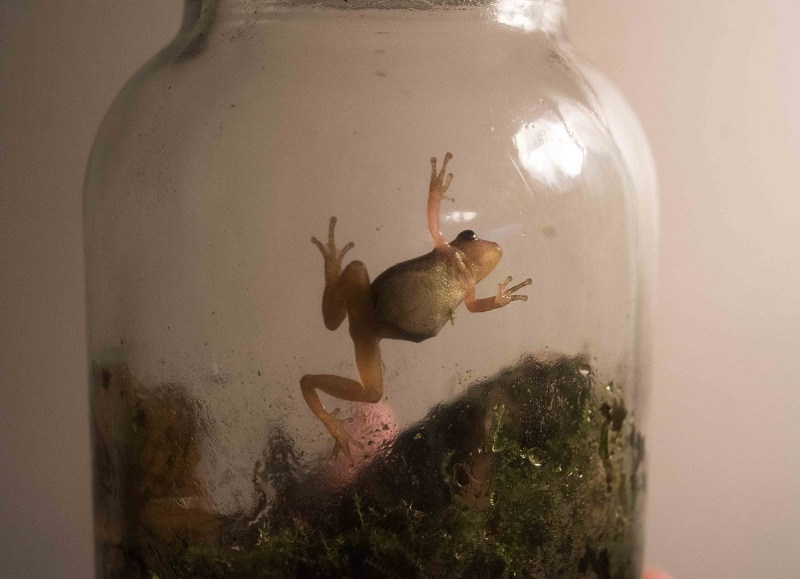
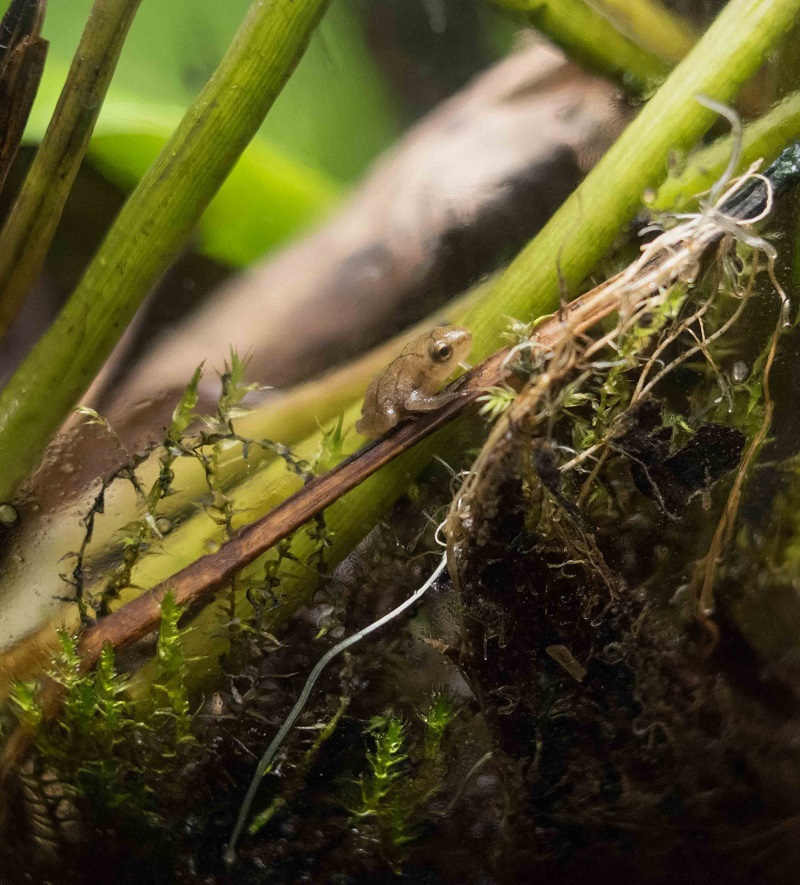
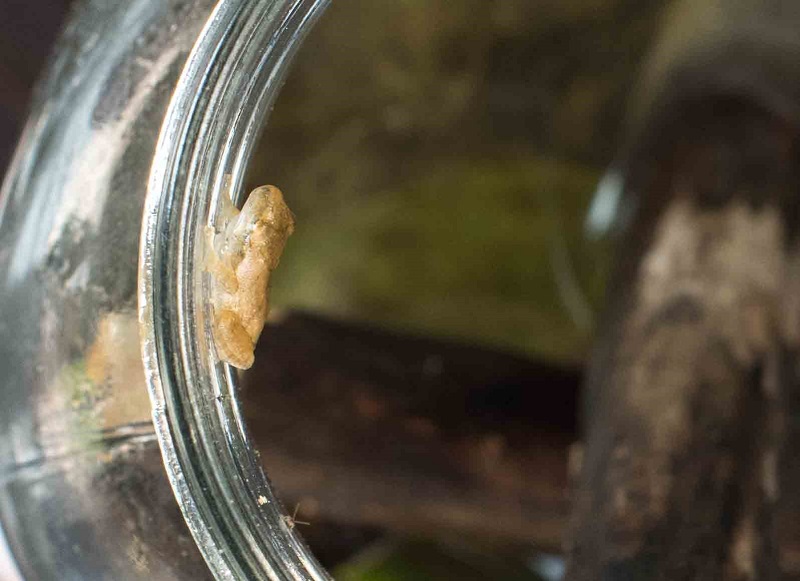
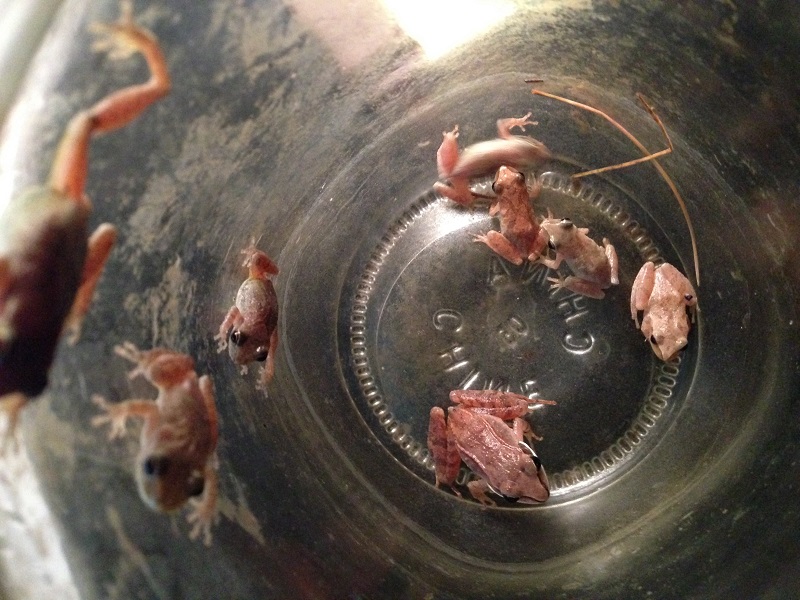

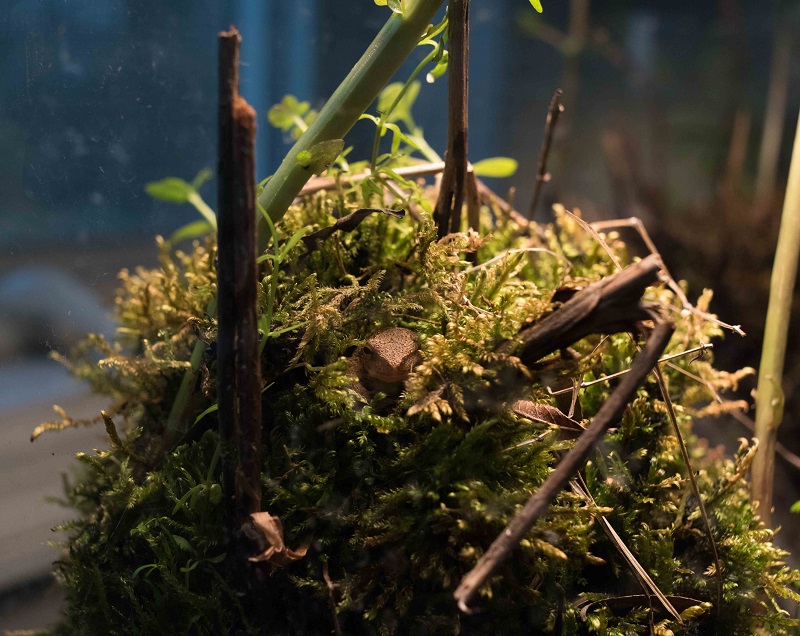
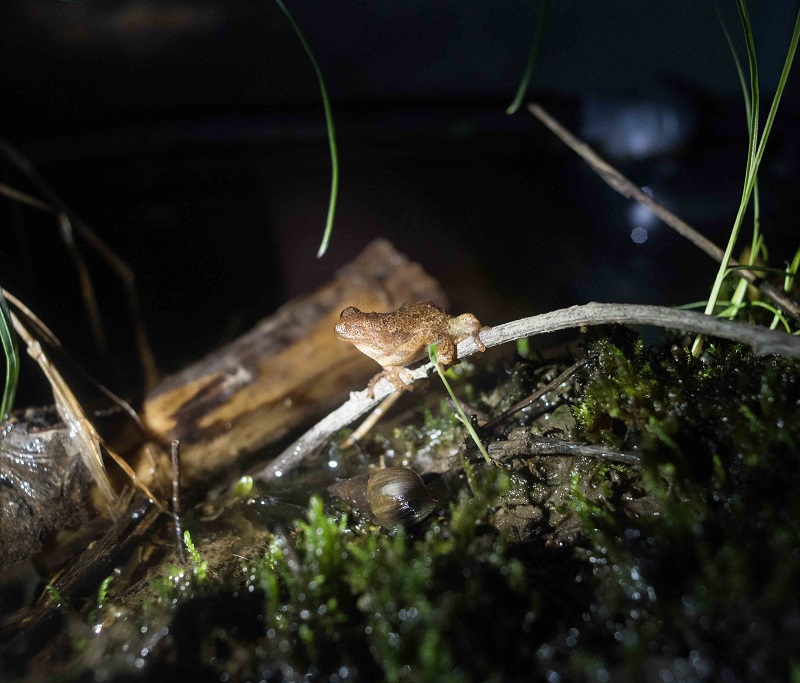
I wouldn’t characterize your attitude as cynical, it’s realistic. Life in the wild can be pretty horrifying. Predators usually don’t humanely kill their prey, often tucking in while it’s still alive. Then if you subscribe o the selfish gene concept, as the organism has mated, their life is superfluous. So it sounds like you’re providing the froggy version of utopia! Lots of sex, food, and habitat. No predators, no freezing cold…
I once bought a bag of apples. They were from South America and I am in New England. One of the apples had a stem still attached to it with a small, beautiful green leaf on it. I twisted it off but couldn’t toss it as I thought about the journey this apple had taken. From S. America, to N. America, across the country to the store from which I bought it and it was not only still alive, but thriving!
I found a small dish, got a sponge, wet it and ‘planted’ my small stem in it…I also named it, Stemy.
I kept Stemy alive for months after that, until one day I realized he was floundering and wouldn’t survive…it’s our innate kindness, we are driven to save things, to help things, to nurture things…whether it’s a one eyed frog or a small stem and a leaf…or a homeless person…their lives are worth the effort…aren’t they?
I volunteer at a local nature museum where part of my duties are feeding and caring for various reptiles and amphibians. I’ve often struggled with the same questions – are these animals “happy?” How do you tell what “emotion” a snake is having, except maybe when it’s hissing at you?
I will say that although I can’t be sure whether the critters in my care are “happy,” I do know that they DO recognize us or at least recognize us as the source of food (and get excited when they see us), they are each unique beings who have different “personalities” for lack of a better word (yes, including the frogs!), and if nothing else probably spend less time stressed out than their wild cousins. Does that make them happy? We’ll never know.
The Amazing Min, I am totally enamored of your story about “Stemy.”